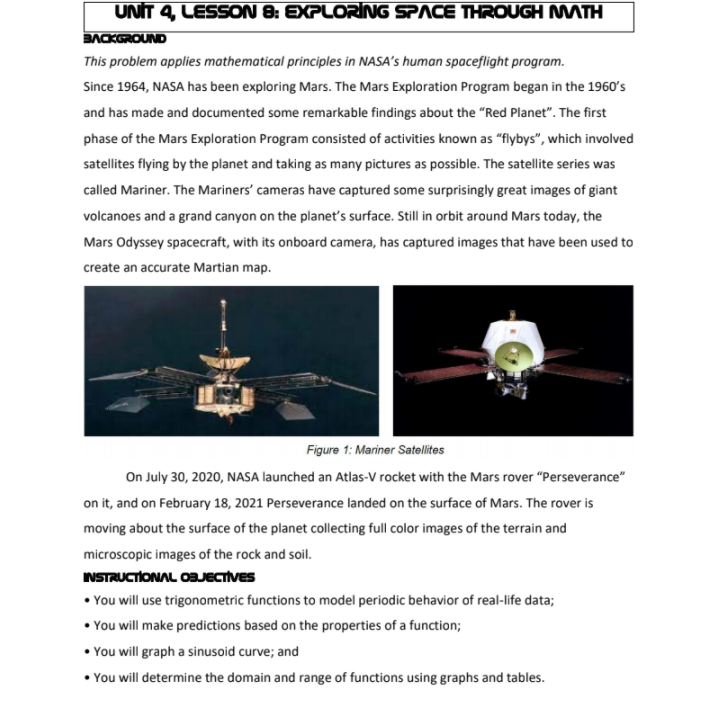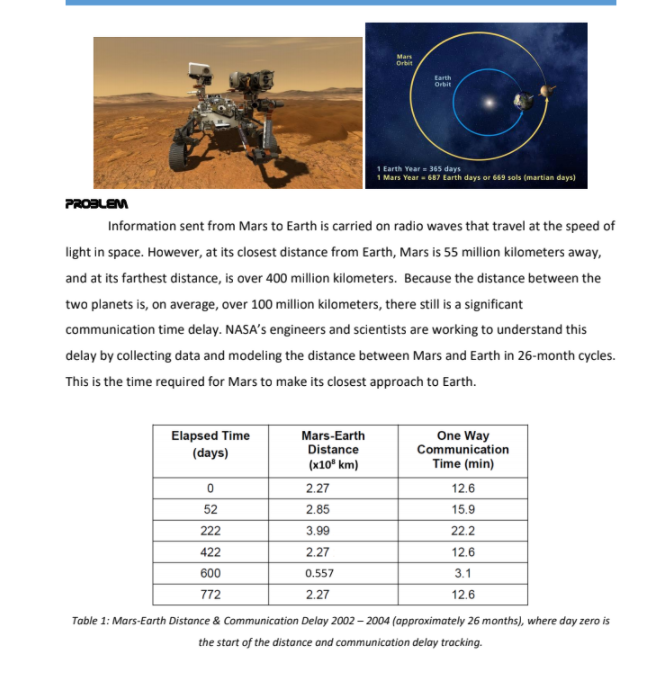Directions: Answer questions 1-8 based on the information on Table 1. Round all answers to the nearest thousandth and label with the appropriate units. 1. According to Table 1, what is the closest distance between Earth and Mars? 2. According to Table 1, what is the farthest distance between Earth and Mars? 3. Based on your answers from #2 and #3, what is the average distance between the two planets?
This is Pre-Calc! Please help and Thank you! Please click the pics for the background info
Directions: Answer questions 1-8 based on the information on Table 1. Round all answers to the nearest thousandth and label with the appropriate units.
1. According to Table 1, what is the closest distance between Earth and Mars?
2. According to Table 1, what is the farthest distance between Earth and Mars?
3. Based on your answers from #2 and #3, what is the average distance between the two planets?
4. Based on your answers from #2 and #3, what is the amplitude of the distances?
5. The distance has a period of 772 days. Write a sinusoidal equation relating the number of days and distance from Earth to Mars.
6. Based on the equation from #5, what is the distance between our planets on Mr. Schutt’s birthday (day 187)?
7. Write a sinusoidal equation relating the number of days and the one-way
communication between Earth to Mars.
8. What is the one-way communication time delay between our planets on Mr. Schutt’s birthday (day 187)?


Trending now
This is a popular solution!
Step by step
Solved in 3 steps






